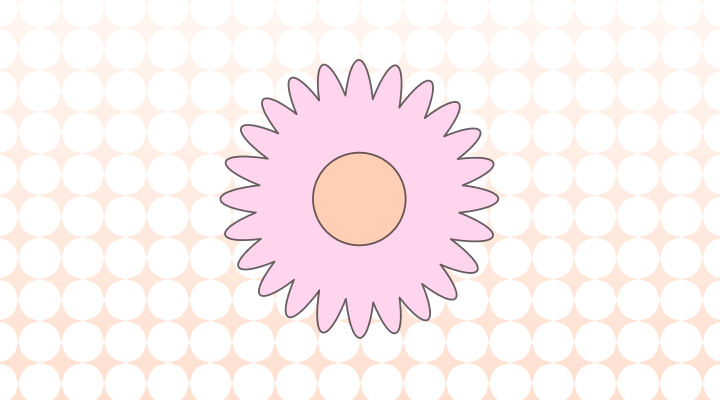Let's explore different types of common flowers and species such as roses, tulips, daisies, and many more. From tropical flowers to popular pink flowers used in bouquets, join us as we delve into the diverse and captivating realm of different flowers and their unique characteristics.

Table of contents
- Common flowers
- Flowers for perfumes
- Popular pink flowers
- Tea flowers
- Medicinal flowers
- Tropical flowers
- Types of flower bouquets
Flowers have an irresistible charm, each variety bringing its unique beauty to the world of botany. From the vibrant hues of tropical blooms to the delicate petals of garden favorites, the world of flowers is as diverse as it is alluring.
Among the various types of flowers, some stand out for their popularity and widespread cultivation. Roses, with their classic elegance and sweet fragrance, are beloved around the globe, coming in a spectrum of colors from deep red to soft coral. Meanwhile, tulips, with their graceful shape and vibrant hues, are a symbol of springtime renewal and are often featured in garden displays and floral arrangements alike.
Common flowers
In the world of flowers, there is a wealth of options to choose from, each offering its unique charm. Peonies, with their lush, ruffled petals and lovely fragrances, are a favorite for weddings and special occasions. Meanwhile, daisies captivate with their simple yet cheerful appearance, symbolizing innocence and purity.
Here are common flowers you may hear in everyday conversations. These flowers are especially popular as garden flowers and flowers used in bouquets.
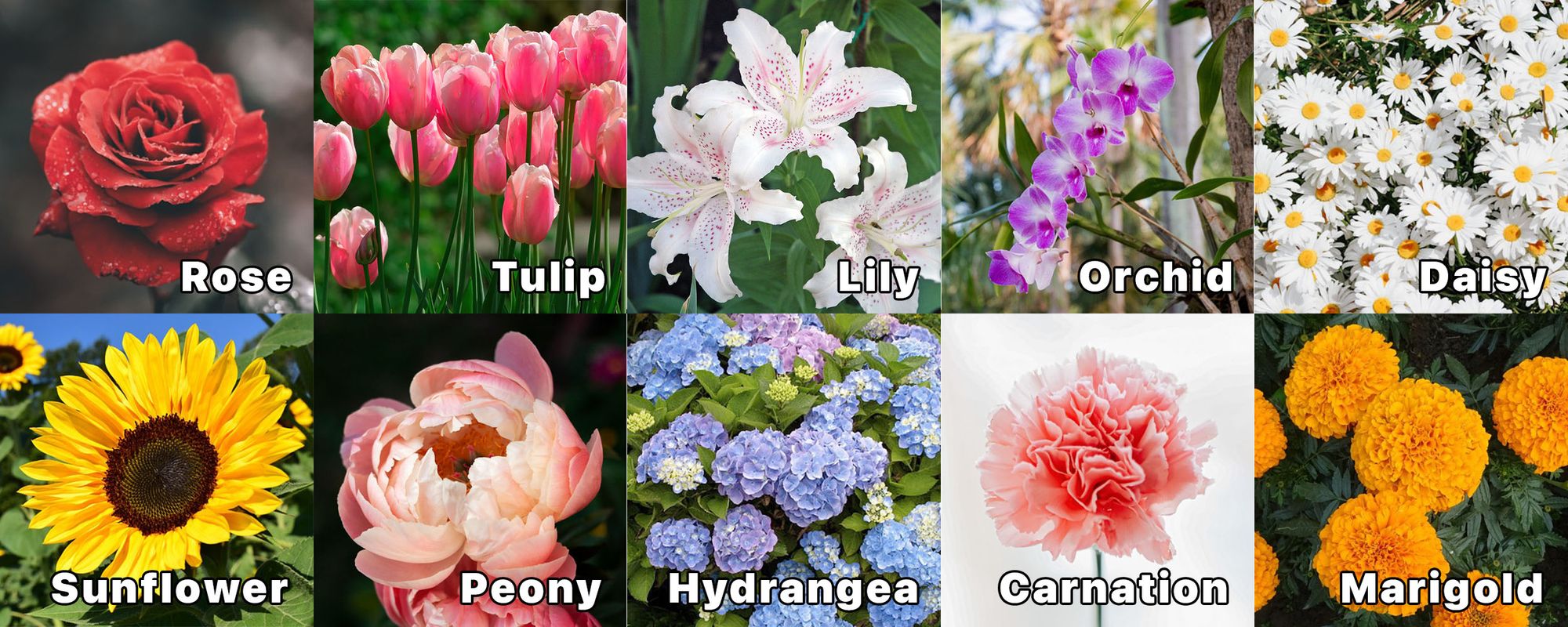
- Rose: Classic and elegant, roses come in a variety of colors and are cherished for their beauty and fragrance.
- Tulip: Graceful and vibrant, tulips symbolize springtime renewal and display a range of colors including red, pink, purple, and yellow, adding vibrant hues to gardens.
- Lily: Majestic and fragrant, lilies are often associated with purity and are popular in bouquets and floral arrangements. Lilies come in various colors such as white, pink, and orange.
- Orchid: Exotic and intricate, orchids boast stunning blooms and are admired for their elegance and variety. They come in white, pink, purple, yellow, orange, and even green.
- Daisy: Simple and cheerful, daisies have white petals with yellow centers and are cheerful additions to any garden.
- Sunflower: Bold and vibrantly yellow, sunflowers are known for their large, showy blooms and are a symbol of happiness and positivity.
- Peony: Lush and romantic, peonies are prized for their ruffled petals and pleasant fragrance. Peonies come in various colors, including shades of white, pink, red, and occasionally yellow.
- Hydrangea: Soft and delicate, hydrangeas feature clusters of tiny flowers and are valued for their voluminous blooms. Hydrangeas display a spectrum of colors, including blue, pink, purple, white, and even shades of green, depending on the acidity of the soil.
- Carnation: Versatile and long-lasting, carnations come in a variety of colors, including white, red, pink, yellow, and purple.
- Marigold: Marigolds have vibrant orange and yellow flowers and are commonly used for pest control and as companion plants.
Flowers for perfumes
Many flowers are adored for their fragrant scent and are commonly used in perfumes and other types of fragrances. Below are some notable flowers that are used in perfumes.
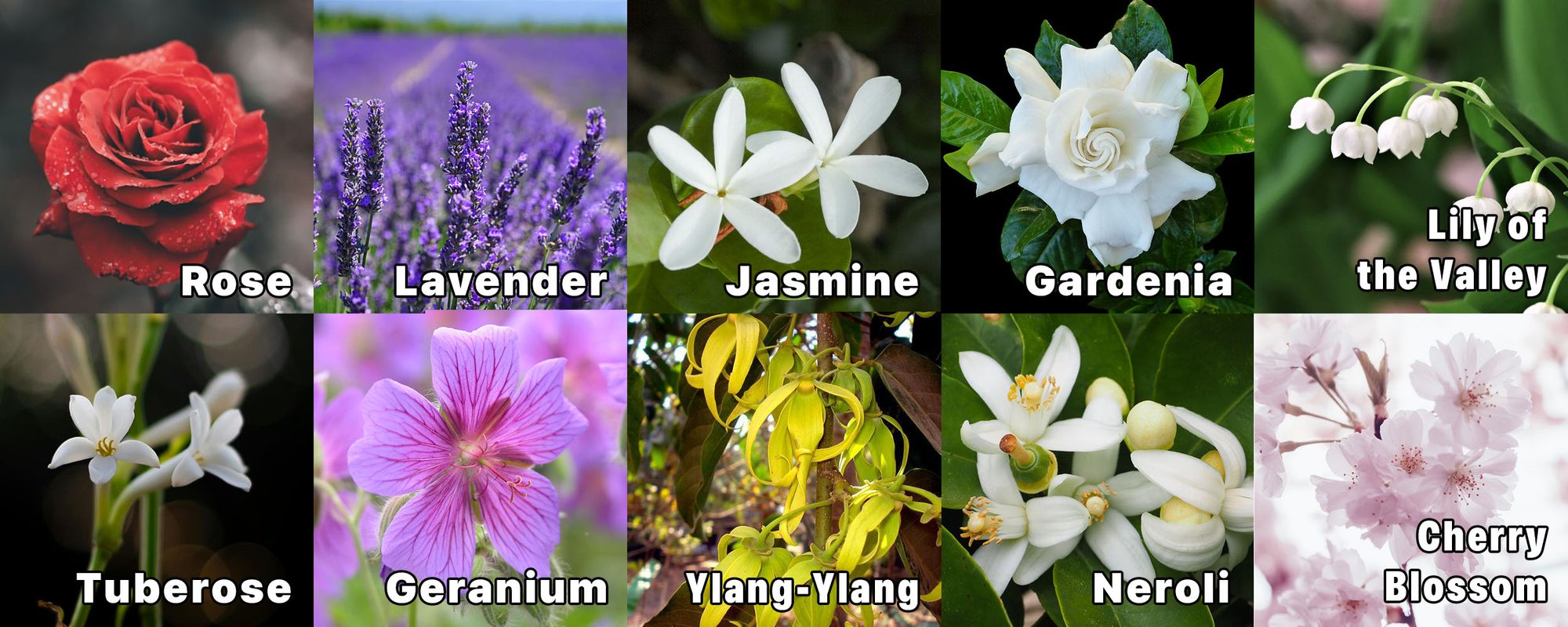
- Rose: Known for its sweet and romantic fragrance, roses come in various colors like pink, red, and white.
- Lavender: With its calming and soothing scent, lavender flowers range from purple to light blue.
- Jasmine: Jasmine emits a rich floral fragrance, often associated with white blossoms.
- Gardenia: Gardenias exude a rich, creamy scent reminiscent of tropical blooms, typically found in white or cream hues.
- Lily of the Valley: These small, bell-shaped flowers offer a fresh and sweet fragrance, often appearing in white or pale pink.
- Tuberose: Tuberose flowers produce a heady, exotic scent with hints of sweetness, usually found in creamy white blooms.
- Geranium: Geraniums offer a light, refreshing scent with floral and citrus notes, available in various colors like pink, red, purple, and white.
- Ylang-Ylang: Ylang-ylang flowers yield a rich, floral fragrance with hints of sweetness, commonly found in shades of yellow.
- Neroli: Extracted from orange blossom flowers, neroli boasts a fresh and citrusy scent, typically associated with white blossoms.
- Cherry Blossom: Cherry blossoms emit a delicate and airy fragrance, evoking the arrival of spring with their pink petals.
Popular pink flowers
The most popular color of flowers, especially for bouquets, is arguably pink. With its longstanding popularity, pink flowers have been sought out for centuries, commonly associated with romantic relationships and love. We curated a selection of especially popular pink flowers below.
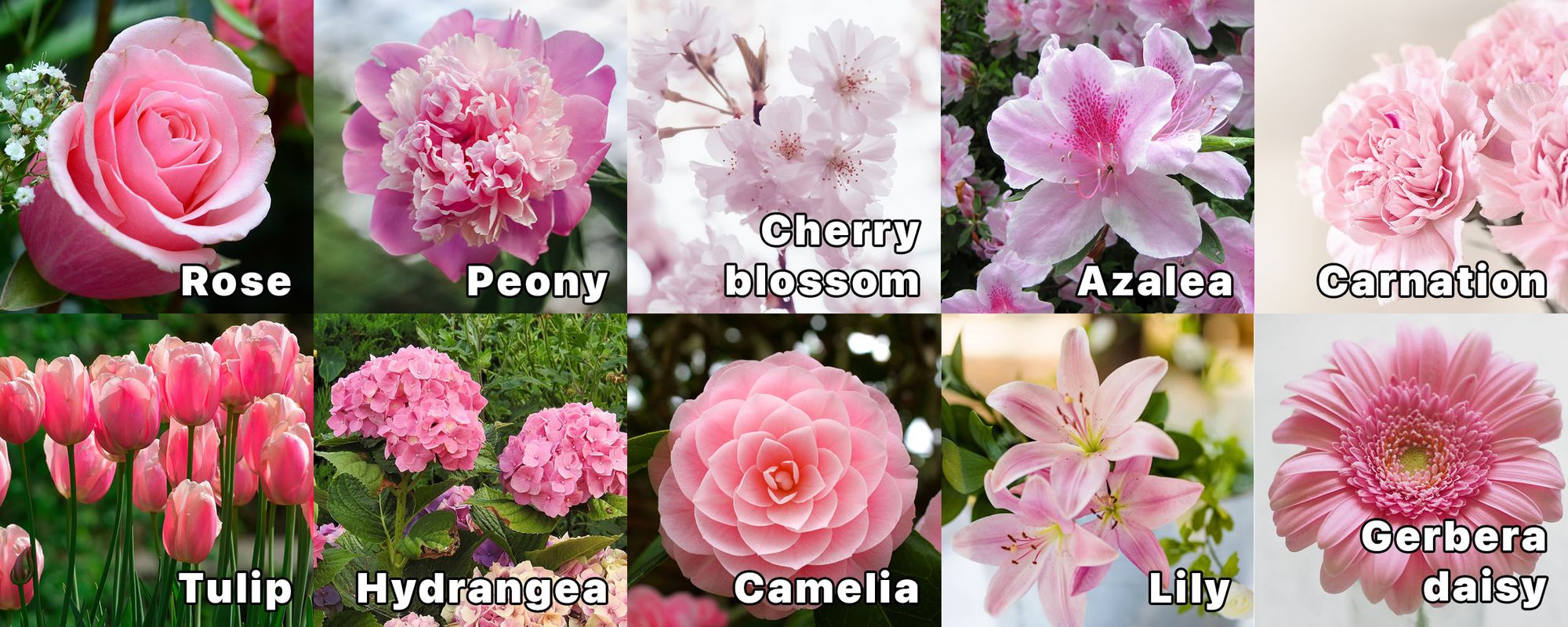
- Pink Rose: Symbolizing grace and admiration, the pink rose is a classic flower cherished for its soft petals and sweet fragrance.
- Peony: Large and lush, the peony boasts layers of delicate pink petals, creating a romantic and enchanting bloom.
- Cherry Blossom: Celebrated for its ephemeral beauty, the pink cherry blossom represents renewal and the fleeting nature of life.
- Azalea: Vibrant and showy, the pink azalea bursts with clusters of blossoms, adding a pop of color to spring gardens.
- Carnation: Versatile and long-lasting, the pink carnation is a symbol of love and affection, making it a popular choice for bouquets and arrangements. It also symbolizes Mother's Day in countries like the US.
- Tulip: Graceful and elegant, the pink tulip symbolizes happiness and contentment, adding a touch of charm to any floral display.
- Hydrangea: With its large, billowy blooms, the pink hydrangea exudes a sense of abundance and generosity, making it a favorite for weddings and special occasions.
- Camellia: Known for its glossy foliage and delicate blossoms, the pink camellia embodies beauty and refinement, often associated with love and devotion.
- Lily: Regal and majestic, the pink lily commands attention with its graceful form, symbolizing purity and renewal.
- Gerbera Daisy: Cheerful and vibrant, the pink gerbera daisy radiates joy and positivity, making it a popular choice for bouquets and floral arrangements.
Tea flowers
Floral teas have been popular for centuries, prized for their delicate aromas and soothing properties. Infused with the essence of blossoms such as chamomile, lavender, and rose, these teas offer a delightful sensory experience that calms the mind and uplifts the spirit. Whether enjoyed as a morning ritual or an evening relaxation, floral teas provide a gentle reminder of nature's beauty and tranquility in every sip.
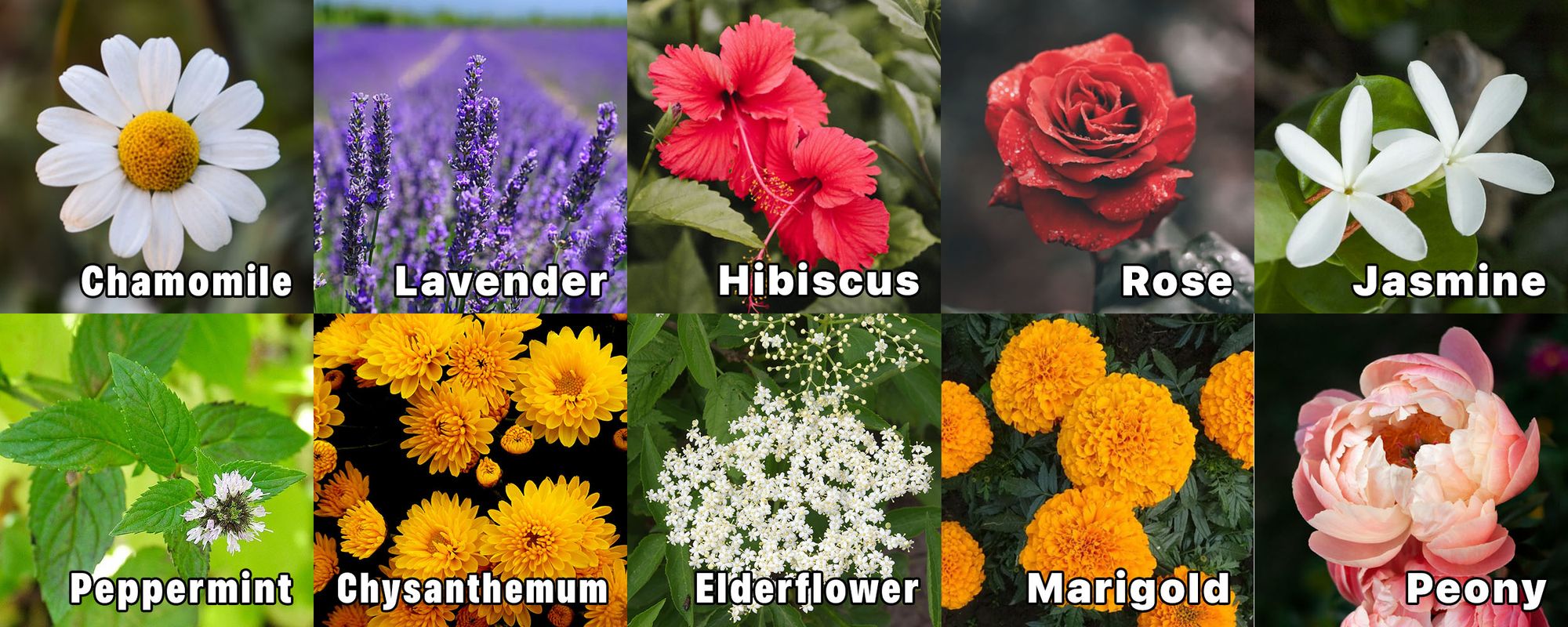
- Chamomile: Known for its soothing properties, chamomile flowers are often brewed into herbal teas to promote relaxation and calmness.
- Lavender: With its delicate fragrance and subtle flavor, lavender flowers add a floral and aromatic note to herbal teas, promoting relaxation and stress relief.
- Hibiscus: Vibrant and tangy, hibiscus flowers are used to make a refreshing herbal tea known for its tart flavor and vibrant red hue.
- Rose: Rose petals lend a gentle floral aroma and flavor to teas, offering a subtle sweetness and hint of romance to the brew.
- Jasmine: Renowned for its fragrant blooms, jasmine flowers infuse teas with a rich floral aroma, creating a soothing and aromatic beverage.
- Peppermint: While not technically a flower, peppermint leaves are commonly used to make herbal teas, offering a refreshing and invigorating flavor with a cooling menthol finish.
- Chrysanthemum: In traditional Chinese medicine, chrysanthemum flowers are brewed into herbal teas believed to promote eye health and improve immunity.
- Elderflower: Elderflower adds a fruity and bright note to teas, imparting a refreshing and uplifting flavor. It's also said to aid symptoms of colds and flus.
- Marigold: Marigold flowers are prized for their bright color and mild, slightly bitter flavor, often used to add color and subtle flavor to herbal teas.
- Peony: Peony flowers are occasionally used to add a delicate floral aroma and flavor to teas, offering a subtle and romantic touch to the brew.
Medicinal flowers
Medicinal flowers have a rich history of use in traditional remedies and natural healing practices. With their diverse therapeutic properties, flowers like calendula, chamomile, and echinacea have long been valued for their ability to alleviate ailments and promote wellness. Whether brewed into teas, infused into oils, or applied topically, these botanical treasures offer a gentle yet effective approach to addressing various health concerns. From soothing inflammation to boosting immunity, medicinal flowers continue to be cherished for their potent healing abilities across cultures and generations.
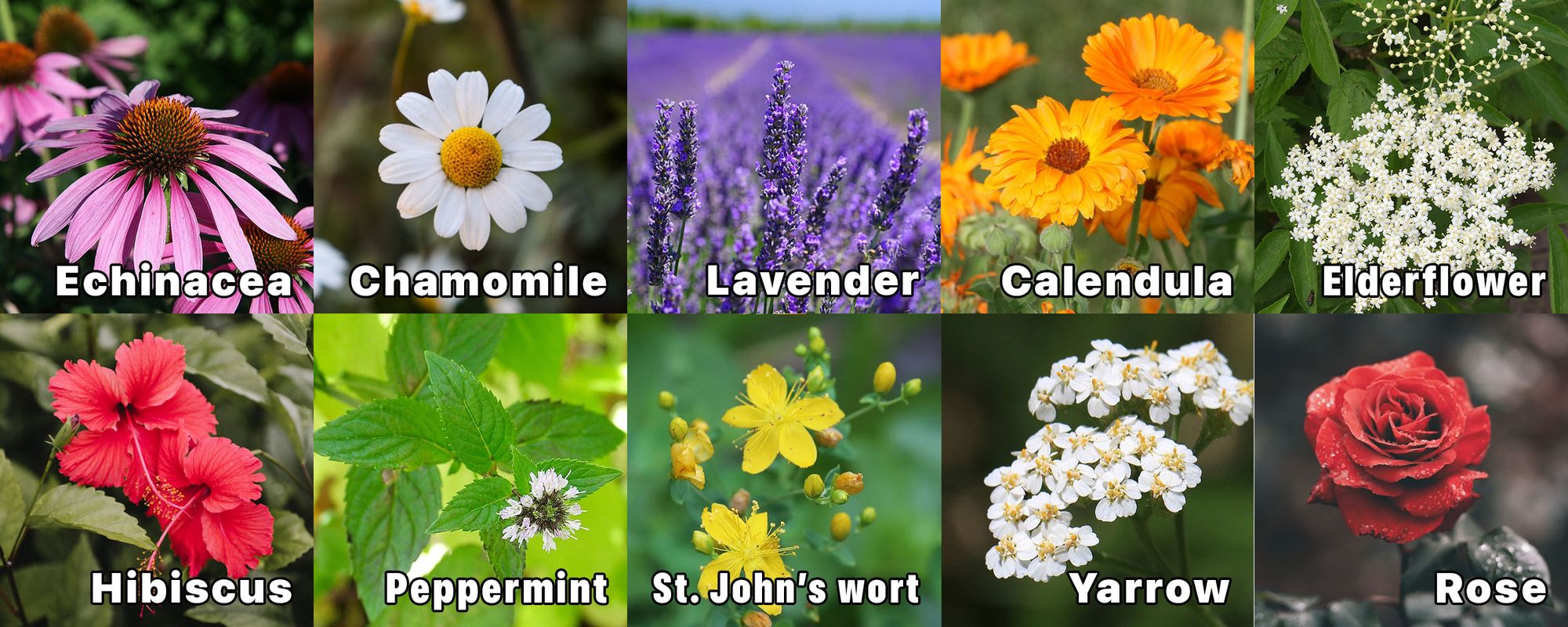
- Echinacea: Echinacea flowers, also known as coneflowers, are believed to boost the immune system and reduce the severity of cold symptoms.
- Chamomile: Chamomile flowers are known for their calming effects and are often used to promote relaxation and improve sleep quality.
- Lavender: Lavender flowers have a calming aroma and are used in aromatherapy to reduce stress and anxiety.
- Calendula: Calendula flowers have anti-inflammatory properties and are used to soothe skin irritations and promote wound healing.
- Elderflower: Elderflower is believed to have antiviral properties and is used to alleviate symptoms of the common cold and flu.
- Hibiscus: Hibiscus flowers are rich in antioxidants and are used to support cardiovascular health and lower blood pressure.
- Peppermint: Peppermint flowers are used to make tea that aids digestion, relieves nausea, and soothes stomach discomfort.
- St. John's Wort: St. John's Wort flowers are used to make herbal supplements that may help alleviate symptoms of mild to moderate depression.
- Yarrow: Yarrow flowers have astringent properties and are used topically to stop bleeding and promote wound healing.
- Rose: Rose petals are rich in antioxidants and are used in herbal teas to support skin health and reduce inflammation.
Tropical flowers
For those seeking a touch of the exotic, tropical flowers offer a tantalizing array of colors and shapes. The orchid, with its intricate blooms and elegant demeanor, is a favorite among flower enthusiasts, while the hibiscus dazzles with its large, showy petals and striking hues. These tropical treasures add a touch of paradise to any floral arrangement or garden setting.
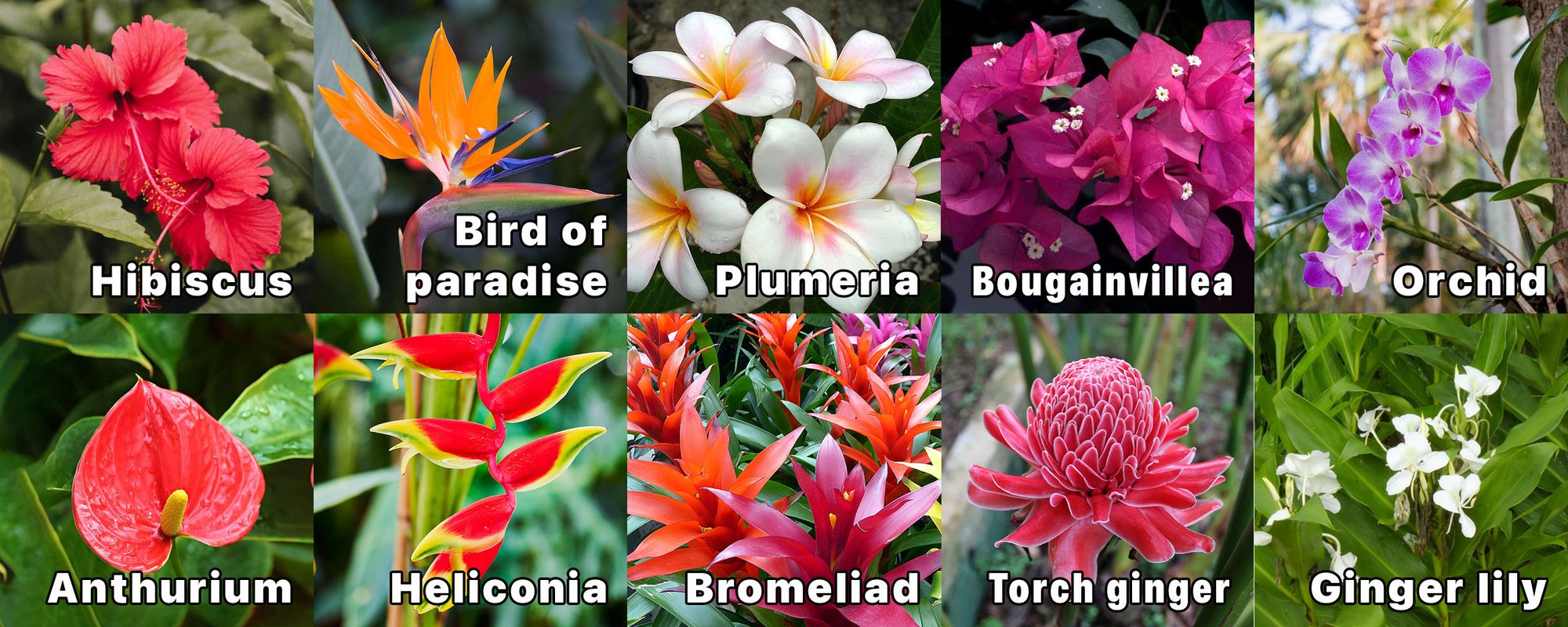
- Hibiscus: Hibiscus flowers are vibrant red and are often used to make herbal teas.
- Bird of Paradise: Bird of Paradise flowers feature striking orange and blue petals resembling a bird in flight.
- Plumeria: Plumeria flowers, also known as frangipanis, are known for their fragrant white and yellow blossoms commonly used in leis worn around the neck.
- Bougainvillea: Bougainvillea flowers come in vibrant shades of pink, red, and purple, adorning tropical landscapes.
- Orchid: Orchids display a variety of colors, including white, pink, purple, and yellow, and are prized for their elegant beauty.
- Anthurium: Anthurium flowers have glossy red spathes and are often used in floral arrangements.
- Heliconia: Heliconia flowers feature bold red, orange, and yellow hues and resemble lobster claws.
- Bromeliad: Adorned with vibrant bracts in shades of red, pink, purple, orange, and yellow, bromeliad flowers add a splash of tropical color to any setting, making them popular choices for landscaping and indoor décor alike.
- Torch Ginger: Torch Ginger flowers are large with a waxy texture, commonly used in tropical cuisine and floral arrangements. The blooms come in pink, red, and white.
- Ginger Lily: Ginger Lily flowers are vibrant orange, yellow, or white and have a spicy fragrance reminiscent of ginger.
Types of flower bouquets
When it comes to flower bouquets, the possibilities are endless. From classic arrangements featuring roses and lilies to more eclectic mixes incorporating wildflowers and greenery, there is a bouquet to suit every taste and occasion. Some popular types of flower bouquets include round bouquets , cascading bouquets, and posy bouquets, each offering its unique style and flair.
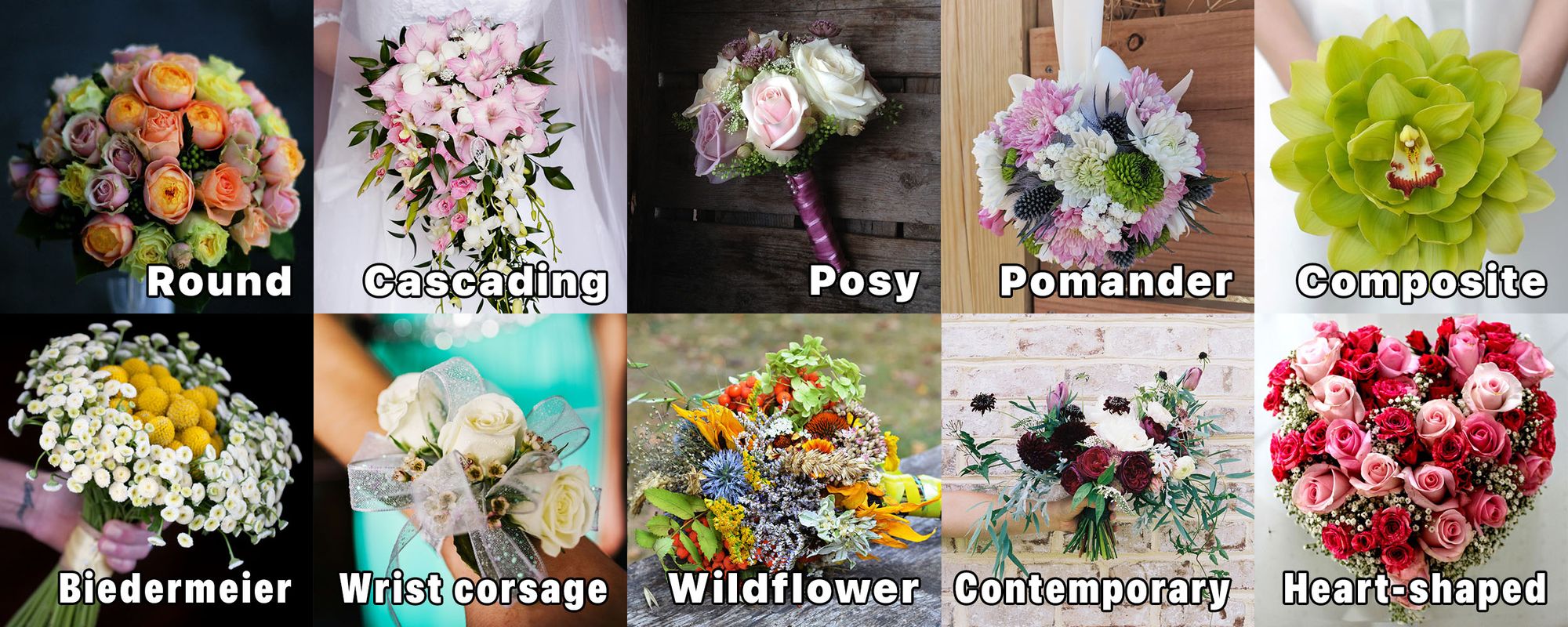
- Round bouquet: A compact arrangement of flowers cut to the same length and tied together, forming a rounded shape.
- Cascading bouquet: Flowers are arranged in a descending order, creating a waterfall-like effect with blooms spilling downward.
- Posy bouquet: A small, compact bouquet typically held in one hand, consisting of a tight cluster of flowers.
- Pomander bouquet: Flowers are arranged in a spherical shape and suspended from a ribbon, creating a ball-like bouquet.
- Composite bouquet: Also known as a glamelia, this bouquet is created by intricately wiring together individual petals to form a single large flower.
- Biedermeier bouquet: Layers of different flowers or colors are arranged in concentric circles, creating a structured and symmetrical appearance.
- Wrist corsage: A small bouquet of flowers worn on the wrist, typically secured with a ribbon or elastic band, offering a convenient and stylish accessory for formal events like proms and weddings.
- Wildflower bouquet: A wildflower bouquet is a rustic arrangement of colorful petals and delicate blossoms, offering a whimsical and nostalgic charm reminiscent of carefree meadows and tranquil countryside settings.
- Contemporary bouquet: A contemporary bouquet features modern floral designs not bound by traditional rules and often incorporating unconventional elements.
- Heart-shaped bouquet: Flowers are arranged in the outline of a heart, symbolizing love and romance, making it a perfect choice for romantic occasions.
Whether adorning a garden, brightening a room, or conveying heartfelt sentiments, flowers hold a special place in the hearts of people around the world. With their diverse array of colors, shapes, and fragrances, they offer endless possibilities for expression and enjoyment. Whether you're drawn to the classic beauty of roses, the exotic allure of tropical blooms, or the simple charm of garden favorites, there's a flower type to suit every taste and occasion.

Want to sound like a native speaker?
Engram’s AI-powered grammar checker makes your English sound like a native speaker’s, suggesting natural English expressions on top of fixing grammar, spelling, punctuation, word order, and vocabulary.






